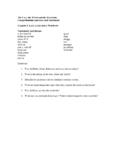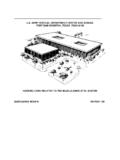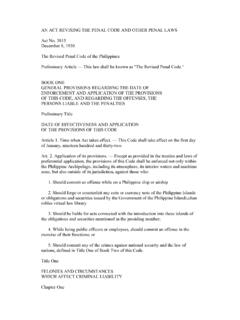Transcription of Introduction to Sleeves - Wild Ginger
1 102 Digital Flat PatternSleeve Cap HeightThe form and function of set in Sleeves is dependent upon the shape and height of the sleeve cap and the style of armhole to which the sleeve is sewn. The sleeve cap is the curved top section of the sleeve from the front underarm to the back underarm. The sleeve cap height is that area of the sleeve from the biceps or underarm line to the top of the sleeve cap. The cap height will vary with each armhole and sleeve style. Changes in fullness of the cap seamline and cap height will result in dramatically different sleeve PrinciplesAs the cap height is shortened, the sleeve will stand or jut away from the arm at the hemline if the armscye is not dropped off the shoulder the cap height gets shorter, the underarm line must get longer in order to produce a sleeve cap line that can still be sewn into the bodice armscye with sufficient ease for comfort and movement.
2 As the cap height is shortened, a gusset is formed at the underarm. This gusset is what provides the freedom of movement. It also creates folds at the underarm that are not desirable in more tailored the sleeve cap height is increased above the standard fitted sleeve , the cap will extend above the normal shoulder line. Higher caps with more ease are more difficult to sew. They require ease stitching to mold the cap to Introduction to SleevesSleeves are both functional and design elements of a garment. As functional elements, Sleeves must allow for freedom of movement and comfort and must enhance the overall purpose of the garment.
3 As design elements, Sleeves should compliment the bodice to which they are TypesThere are three basic types of Sleeves - set in, kimono, and raglan. Set in Sleeves are sewn to the bodice armholes. All set in type Sleeves must be eased, gathered, darted, or tucked and sewn into the bodice armscye seam. They can be fitted or flared, cut to any length, and their hemlines finished in a variety of Sleeves are cut all in one with the front and back bodice. The kimono sleeve is always cut with a deeper armscye than the set in sleeve . Wrinkles under the arm are inherent to this type of sleeve because of the extra fabric between the bodice and sleeve .
4 Raglan Sleeves have part of the sleeve attached to the bodice. A diagonal seam is formed from the neckline to the underarm. Underarm wrinkles are common in this type of sleeve , as well. Extra ease is added across the chest and the armhole is lowered to increase freedom of with Raglan SleeveBodice with Set In SleeveSleeve Cap HeightBodice with Kimono Sleeve103 chapter 5: Sleeves and Cuffsthe armhole without puckering. Fabric weight and stiffness will significantly influence the way a sleeve cap is eased into the armhole. Jacket and coat Sleeves are often redesigned to reduce ease but not restrict movement. The shoulder line is extended past the shoulder point and the shoulder slope is StylesSet in Sleeves fall into three main categories - classic, casual, and t-shirt.
5 The sleeve style is mainly determined by the height of the sleeve SleeveThe classic sleeve is the sleeve found in most traditional tailored, fitted styles. It can be drafted with or without an elbow fitting dart. It should be sewn to an armscye where the shoulder point at the armscye ends at the shoulder tip, thus the armscye is not dropped off the shoulder. The classic sleeve is characterized by a high sleeve cap. The higher sleeve cap is much more formal and attractive when movement is not a priority. The armhole depth on the bodice could be raised slightly to provide a bit more freedom of movement without sacrificing aesthetics.
6 The classic sleeve is a trade off between style and mobility. Cap height for the classic sleeve should be about 5 ( cm) to 6 (15 cm). Additional cap ease is needed to go over ball of the arm since the sleeve cap is high and bicep or underarm line is narrower. Cap ease should be between 1 ( cm) to 2 (5 cm).Casual SleeveThe casual sleeve is a less tailored style. The bodice armhole shoulder point is dropped off the shoulder one half to one inch ( to cm). Diagonal wrinkles will form at the armscye as a result; however, greater freedom of movement is possible. The casual styles are a nice compromise between style and mobility and between formal classic styles with little freedom of movement and sloppy t-shirt styles.
7 The cap height should be about 3 ( cm) to 4 (10 cm) with about 1 ( cm) ease. The shoulder seam is lengthened one half to one inch ( to cm) on the bodice and the shoulder slope is also lengthened to raise the shoulder line slightly. The armhole is therefore larger and the sleeve cap is also larger and so less ease is required in cap. Classic SleevesSleeve StylesClassic BodiceCasual Bodice104 Digital Flat PatternA gusset is created at the underarm for freedom of MarkingsThe figure below denotes the sleeve markings that will be used throughout this chapter . For the following lessons, the front sleeve cap will always be on the right side of the sleeve and the back sleeve cap will be on the left side of the sleeve .
8 The top most mid point of the sleeve cap is the shoulder line matching point. The biceps or underarm line is drawn from the back cap at the underam line to the front cap at the underarm line. The area between the biceps line and the shoulder point is the sleeve cap. The distance is known as the sleeve cap height. T-Shirt SleeveThe t-shirt sleeve is a very casual style. The shoulder point on the bodice armscye is typically dropped off the shoulder more than one inch ( cm) and the armhole is a very shallow curve. Diagonal wrinkles will form at the armscye as a result. Greater freedom of movement is possible with this style though. The sleeve cap height can be 0 to 2 (5 cm) with 0 to.
9 5 ( cm) shoulder line and shoulder slope are lengthened extensively to drop the armscye off the sleeve cap is flat and can be sewn in before the underarm seam is sewn. T-Shirt SleeveT-ShirtCasual SleeveSleeve MarkingsHigh sleeve Cap and Low sleeve Cap116 Digital Flat PatternCap SleeveCap Sleeves are very short Sleeves with a curved hemline. The sleeve cap seamline can extend around part or all of the armhole seamline. The cap sleeve is a classic sleeve with a high sleeve cap and works best in classic armhole that is not dropped off the Cap SleeveChoose File/Open (FO) and open the Tapered_Sleeve from the Patterns/ Sleeves File/Save As and save the file as Partial_Cap_Sleeve in the Patterns/ Sleeves Line (LI) and SNAP to point 1a, the shoulder point of the sleeve cap (Fig.)
10 1).Hold the Control key down and drag the mouse 5 ( cm) and press the Enter the line just drawn and choose Locate Points (LP).SNAP to point 1a, the shoulder point of the sleeve cap (Fig. 1).Enter 4 (10 cm) for the single point distance and press Apply (Fig 1.).Choose Line (LI) and SNAP to point 2a, the bottom point of the line drawn down from shoulder point (Fig. 1).Hold the Control key down and drag the mouse to the right past the front sleeve cap (Fig. 1).CLICK to place the end point of the line (Fig. 1).Choose Intersect (IN) and CLICK on line 1 (Fig. 2).CLICK on arc 2, the lower front sleeve cap arc (Fig. 2).Choose Intersect (IN) and CLICK on line 1 (Fig.






